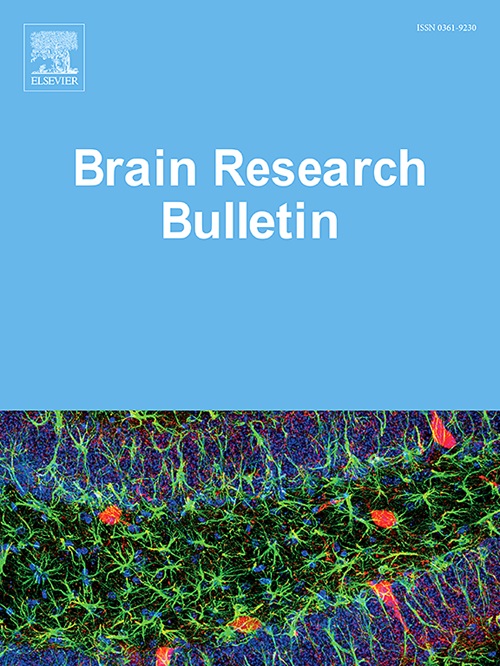The emerging role of 12/15-lipoxygenase in ischemic stroke
IF 3.5
3区 医学
Q2 NEUROSCIENCES
引用次数: 0
Abstract
The arachidonic acid metabolic pathway is a classic inflammatory pathway. 12/15-lipoxygenase (LOX), a member of the lipoxygenase family that metabolizes arachidonic acid, has been implicated in the pathogenesis of numerous central nervous system (CNS) diseases. Ischemic stroke is a devastating disease in which the occlusion of cerebral arteries leads to a series of pathophysiological changes in brain tissue, triggering an inflammatory cascade within the brain that results in neuroinflammation. Prior research has shown that 12/15-LOX levels in the brain are elevated following stroke. In this review, we elaborate on the key pathological mechanisms that unfold following ischemic stroke, including neuroinflammation, oxidative stress, neuronal apoptosis, and blood-brain barrier disruption, and present evidence demonstrating that 12/15-LOX inhibition could be used to treat ischemic stroke through various avenues. Furthermore, we list currently available inhibitors of 12/15-LOX and the preclinical or clinical applications, offering novel insights for the early diagnosis, prognosis evaluation, and targeted therapy in neurological diseases.
12/15-脂氧合酶在缺血性卒中中的新作用。
花生四烯酸代谢途径是典型的炎症途径。12/15-脂氧合酶(LOX)是代谢花生四烯酸的脂氧合酶家族成员,与许多中枢神经系统(CNS)疾病的发病机制有关。缺血性中风是一种毁灭性的疾病,大脑动脉闭塞导致脑组织发生一系列病理生理变化,引发大脑内的炎症级联反应,导致神经炎症。先前的研究表明,中风后大脑中的12/15-LOX水平会升高。在这篇综述中,我们详细阐述了缺血性卒中后的主要病理机制,包括神经炎症、氧化应激、神经元凋亡和血脑屏障破坏,并提出证据表明12/15-LOX抑制可以通过多种途径用于缺血性卒中的治疗。此外,我们列出了目前可用的12/15-LOX抑制剂及其临床前或临床应用,为神经系统疾病的早期诊断、预后评估和靶向治疗提供了新的见解。
本文章由计算机程序翻译,如有差异,请以英文原文为准。
求助全文
约1分钟内获得全文
求助全文
来源期刊

Brain Research Bulletin
医学-神经科学
CiteScore
6.90
自引率
2.60%
发文量
253
审稿时长
67 days
期刊介绍:
The Brain Research Bulletin (BRB) aims to publish novel work that advances our knowledge of molecular and cellular mechanisms that underlie neural network properties associated with behavior, cognition and other brain functions during neurodevelopment and in the adult. Although clinical research is out of the Journal''s scope, the BRB also aims to publish translation research that provides insight into biological mechanisms and processes associated with neurodegeneration mechanisms, neurological diseases and neuropsychiatric disorders. The Journal is especially interested in research using novel methodologies, such as optogenetics, multielectrode array recordings and life imaging in wild-type and genetically-modified animal models, with the goal to advance our understanding of how neurons, glia and networks function in vivo.
 求助内容:
求助内容: 应助结果提醒方式:
应助结果提醒方式:


